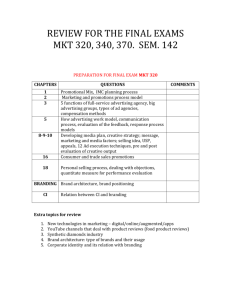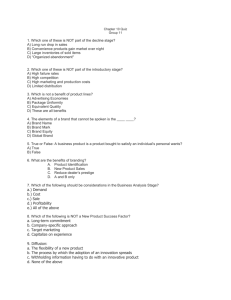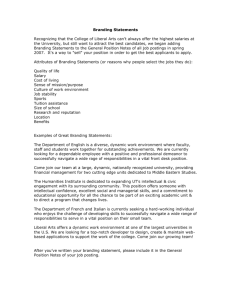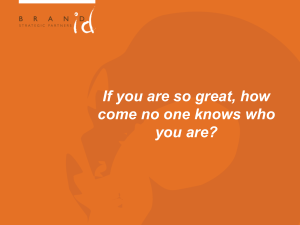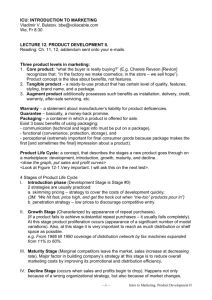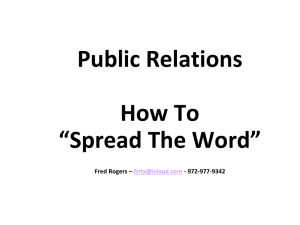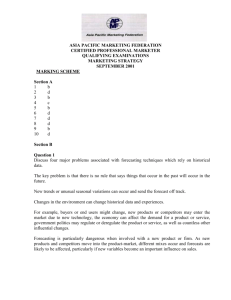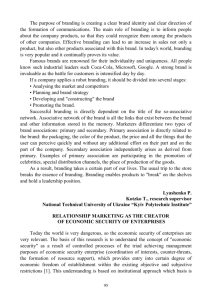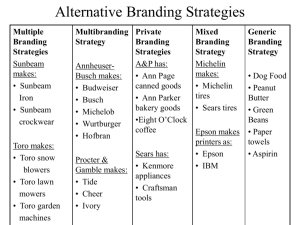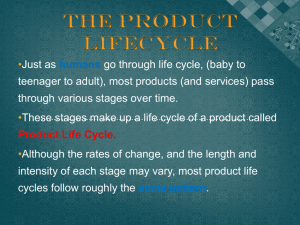E-marketing Part 2
advertisement
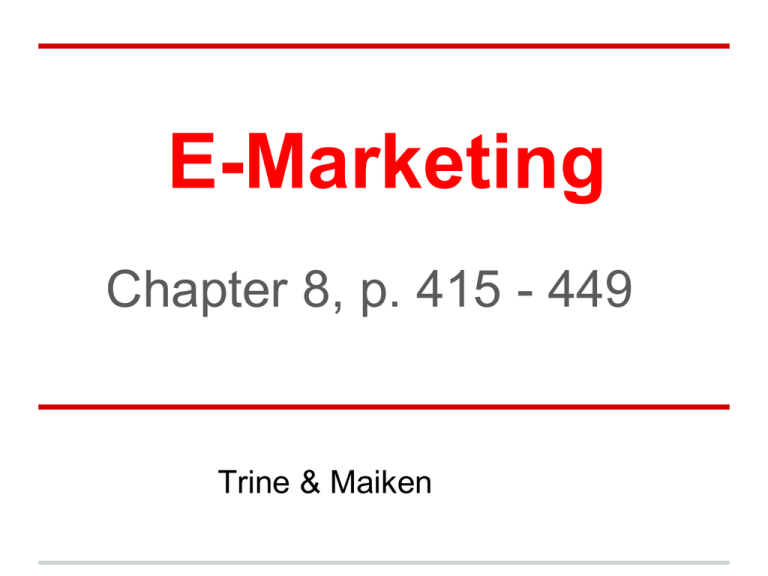
E-Marketing Chapter 8, p. 415 - 449 Trine & Maiken Disposition • The '6 Is' of e-marketing • Marketing Mix - the 4 Ps of product • Online branding - The importance of branding online The '6 Is' of e-marketing 1. Interactivity 2. Intelligence 3. Individualization 4. Integration 5. Industry restructuring 6. Independence of location "Recognizing the differences between internet and other media is important to achieve success in channel promotion and channel satisfaction and lead to positive channel outcomes and profitability." p. 415 Interactivity "[...] Interactivity is a key characteristic of the Internet which enables companies to communicate with customers in a new way." p. 415 Intelligence The — internet collects marketing research The — customers perception of products and services Every — click is beeing recorded Individualization The products are tailored to the individual Personalization Customer relationship Integration Consider integration of media - how to complement different channels to get customers Changing channels during the buying process; 'mixed-mode buying' (switching between online/offline) Industry restructuring Disintermediation, reintermediation and countermediation when developing emarketing strategy "How do our offerings compare to those of competitors in terms of features, benefits and price? " Independence of location The Internet makes it possible to sell to a country without a local sales or customer service force The physical shops will still be necessary for some products Marketing Mix - the 4 Ps of product The marketing mix is applied frequently when developing marketing strategies It provides a simple framework for varying different elements of the product offering to influence the demand for products within target markets • • • • Product Price Place Promotion Product There are many alternatives for varying the Product new digital products = information products - delivered over the web Some companies only offer a subset of products online Alternatively, a company may have a fuller catalogue available online using the Internet to vary the extended product is most Chaffey and Smith (2008) suggest these examples of how the Internet can be used to vary the extended product: _ Endorsements _ Awards _ Testimonies _ Customer lists _ Customer comments _ Warranties _ Guarantees _ Money-back offers _ Customer service (see People, Process and Physical evidence) _ Incorporating tools to help users during their use of the product. Price Refers to an organization's pricing policies, used to define pricing models and to set prices for products. It's about setting the right price! For example, to set the price you need to know how many that are demanding for the product. Place - The Internet has the greatest implications for Place = global reach - Issues of trust - most products are still sourced locally - Apple iTunes has proved successful in offering this service worldwide. Promotion - Promotion is usually part of a communications strategy - Selection of target markets, positioning and integration of different communications tools Two approaches: Specify the communications techniques required for different stages of the buying process How the Internet can supplement the range of promotional activities such as advertising, sales promotions, PR and direct marketing. Online branding What is a brand? "It is the sum of the characteristics of a product or service perceived by a user." (p. 434) People thinks of branding as the logo - it's dependent on a customer's psychological affinity for a product Credible brand generates customer value by: - Reducing perceived risk - Reducing information search costs - Creating a favourable, trustworthy perception of the Online branding A method by which the internet can change branding is that online: "the first-hand experience of the brand is a more powerful token of trust than the perception of the brand". Jevons and Gabbot (2000) - Online the customer can interact with the brand


